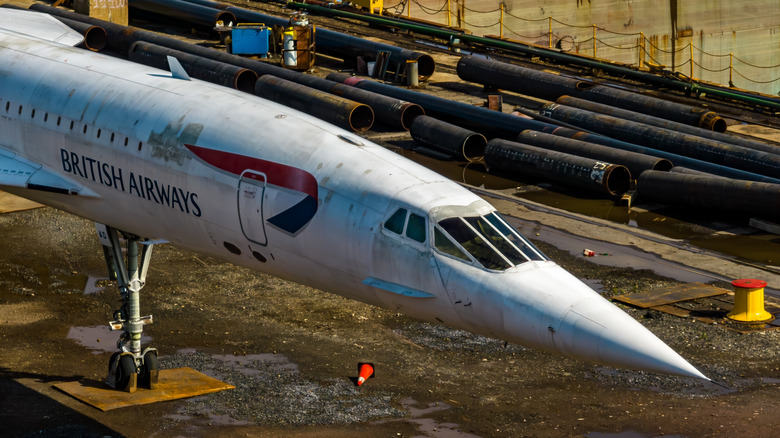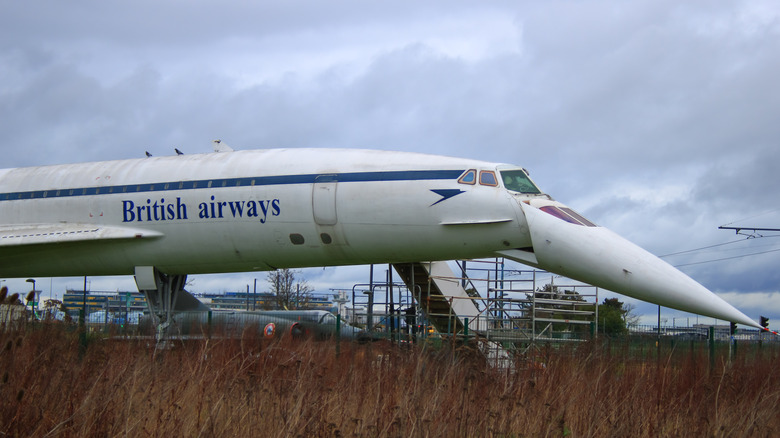Why Did The Concorde Nose Move And Point Down?
Despite the Concorde being discontinued well over two decades ago, it remained ahead of its time and became a much-discussed aircraft among aviation enthusiasts and the general public. Its popularity primarily stemmed from its sheer speed. As the only passenger plane to regularly fly the transatlantic route at supersonic speeds, the Concorde regularly flew between London and New York in just under 3.5 hours, compared to subsonic modern-day jets that do the same in around 7 hours.
Given that it was designed to travel at twice the speed of sound, which is why it never flew routes over land, it featured several interesting design cues. The most notable of these included the ogival delta wing design, an exceptionally narrow fuselage with a long nose, and a layer of highly reflective white paint to dissipate the extreme heat generated from traveling at Mach 2. It also came with a movable nose design that allowed the pilots to alter the angle of the nose depending on different flying conditions, setting it apart from most passenger planes of its time. Unlike subsonic passenger jets of today, which feature relatively short noses, the supersonic purpose of the Concorde mandated a long, conical nose design that would reduce aerodynamic drag.
However, given that the Concorde's windscreen was positioned right at the top of a long, narrow fuselage, the long nose meant that it would almost completely obscure the view of the pilot while the aircraft negotiated runways and taxiways. In fact, with the visor and nose fully up, the windscreen only offered five degrees of downward view. The Concorde's designers needed a fix to this issue, and they found inspiration from a research aircraft called the Fairey Delta 2, featuring a movable nose.
Concorde's droop nose mechanism: The details
Aerospatiale and the British Aircraft Corporation — the companies that developed the Concorde — tried several designs for the droop nose before homing in on the final version that made it to production. The final design incorporated two key things: a droop nose that would "drop" when required and a retractable visor that covered the main windshield when the nose was up. In the nose-up position — how the Concorde did its supersonic flights — the visor gave additional protection to the main windshields, which would otherwise be subject to high temperatures and extremely high aerodynamic loads induced by supersonic flight.
The Concorde's movable nose and visor mechanism offered four different positions for the pilots to choose from. One was the nose and visor being fully up, a position intended for when the aircraft was cruising at supersonic speeds and while it was parked on the ground. In the second position, the nose remained fully up; however, the visor remained retracted. This position was favored by pilots when the aircraft had to take off for short subsonic flights. This position was also used at airports and hangars to enable easy cleaning of the Concorde's windshield.
In the third position, the visor remained retracted, but the nose went down by five degrees. This position was used during take-off and while taxiing around airports. In the final position, the visor would be retracted, while the nose would be down at the maximum droop angle of 12.5 degrees. This position gave pilots maximum visibility and was used during landings, as well as taxiing.

